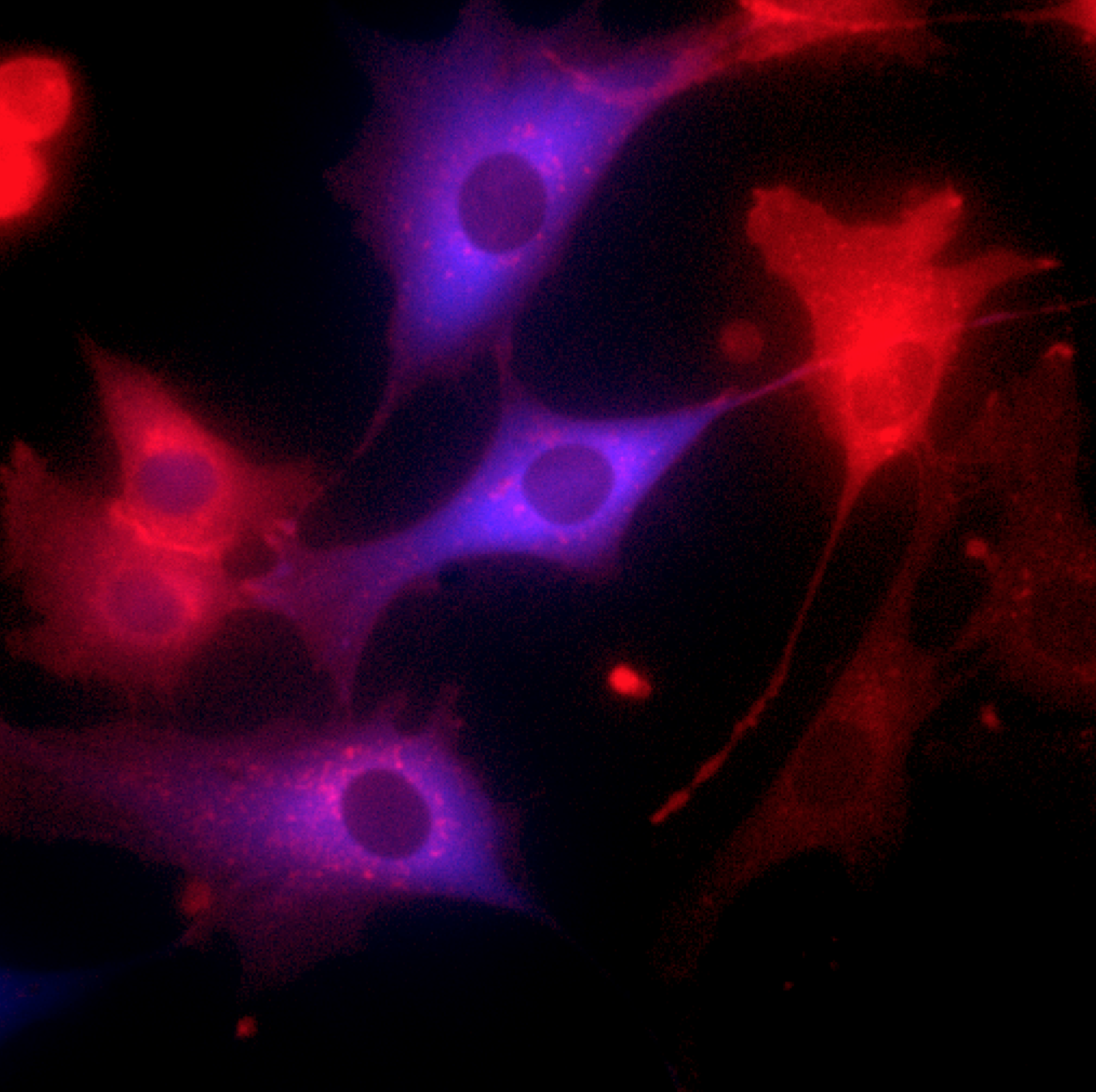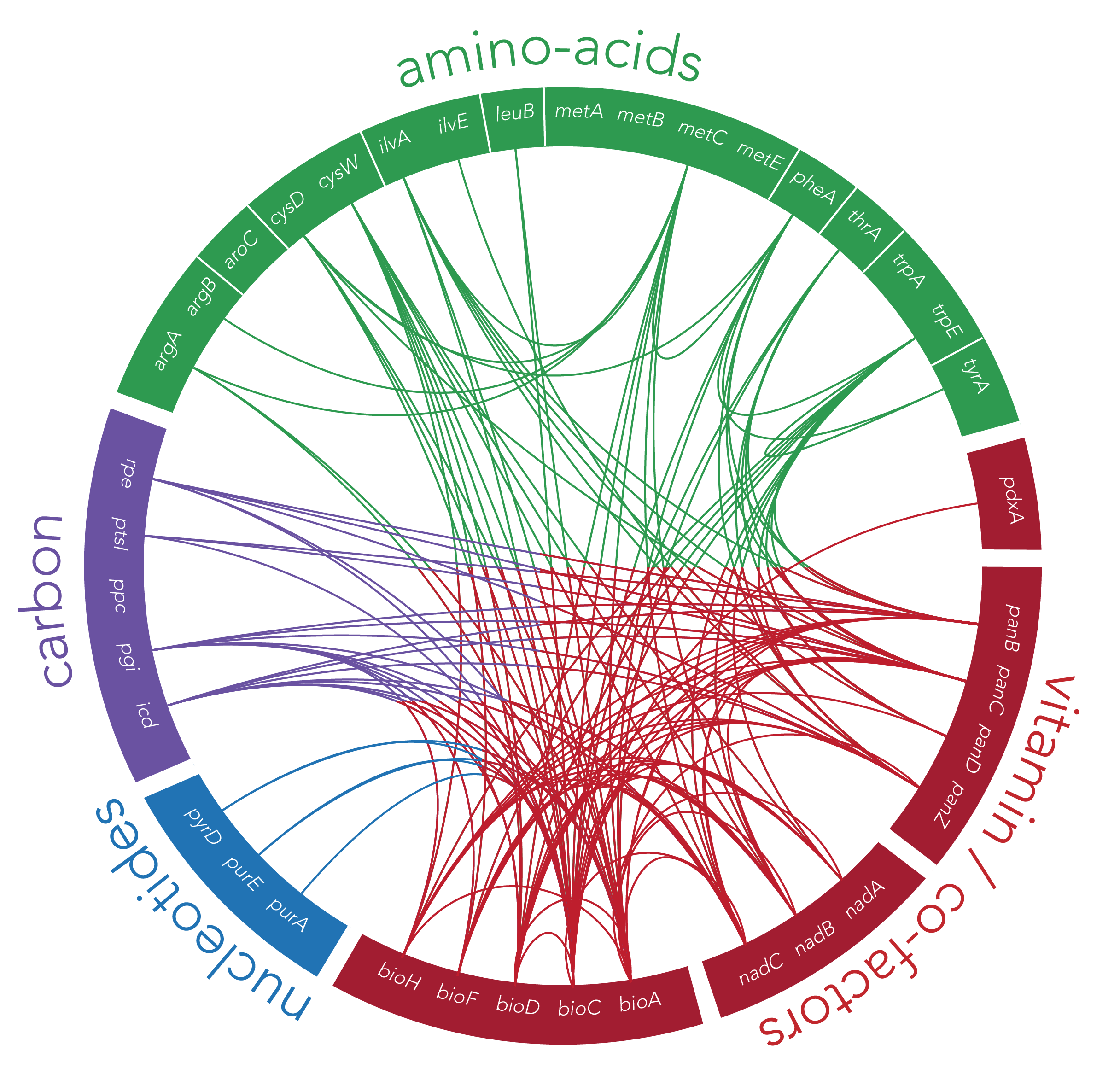Untangling Host-Drug-Microbiome interactions:
from core principles to emergent properties
Cells in natural habitats operate in complex and dynamic environments that feature numerous interactions between multiple active and passive members (organisms, cell types, and molecules). Understanding how such complex systems operate and predicting their emergent properties are formidable challenges. Our lab studies how cells decode, respond, and adapt to external stimuli in the context of multi-lateral host-drug-microbiome interactions such as in the tumor-microbiome. We address this complexity challenge by reconstituting multi-member systems with varying levels of complexity from individual parts that are well-understood on their own (model organisms, clonal cell-lines, drugs, and metabolites). This bottom-up approach allows us to investigate the unique properties that emerge in complex systems using tractable host-drug-microbiome models. Our experimental work leverages on genomics, transcriptomics, and quantitative high-throughput microscopy and is complemented by computational approaches and mathematical modeling.
Our lab uses model systems with varying levels of complexity to investigate the complex multi-lateral host-tumor-microbiome interactions
Host-drug interactions are modulated by the host’s microbiome (via direct and indirect mechanisms). We are investigating these complex interactions in the specific context of the tumor-associated bacteria.
Evolutionary adaptation in the tumor microbiome
The human microbiome emerges as a major player in cancer biology. Groundbreaking studies in recent years uncovered clinically relevant associations between human microbiota and therapy success, and have identified mechanisms facilitating these interactions. Recent research of patient tumors revealed that many tumors harbor their own microbiome. These exciting findings led to the appreciation that personalized cancer treatment should be tailored by the genetic makeup of both tumor and the microbiome. Using a microbial-centric view, our research aims to reveal how bacteria adapt to the unique tumor microenvironment. We are investigating these evolutionary questions in diverse experimental systems and by using both model bacterial species and clinical isolates cultured directly from tumors resected from human patients. We are complementing ex-host experiments by using bacteria-colonized tumors in mouse models.
microbiome and host-targeted drugs interactions
The human gut microbiome is a central factor influencing the efficacy of host-targeted drugs. This impact is facilitated by a myriad of complex host-drug-microbiome interactions that are gradually and slowly being characterized. An important force impacting host-drug-microbiome interactions is the selection force host-targeted drugs apply on the microbiome, which in turn can lead to impactful ecological and evolutionary adaptations in the microbiome itself. However, while the impact of many host-targeted drugs on the microbiome is widely appreciated, the bacterial targets of these drugs remain mostly unknown. In our study, we are screening large drug libraries to identify host-targeted drugs that inhibit bacterial growth and are aiming to identify the bacterial targets of these drugs. Such systematic understanding will reveal which host-targeted drugs resemble known categories of antibiotic drugs and if host-targeted drugs can point to new bacterial pathways that can be targeted by yet-to-be developed antibiotics.
Host-targeted drugs can unintentionally hamper the integrity of the host’s microbiome by inhibiting the growth of some of its microbial members. This impact can, in turn, culminate in microbiome dysbiosis and can impact disease progression and treatment success.
Inhibition of cancer cell growth with targeted drug therapy is restricted due to rewiring of regulatory networks. A subpopulation of cells that have adapted to the drug within a two day treatment is marked by a green dye indicating that they are actively proliferating.
UNCOVERING THE MECHANISMS OF CELL ADAPTATION TO TARGETED THERAPIES
In recent decades substantial progress has been achieved in designing drugs for targeted cancer therapy, yet resistance remains a major challenge that limits the overall clinical impact. While most efforts are dedicated to characterizing the genetic mechanisms of resistance that evolve after months of therapy, emerging evidence suggests that cells can also adapt within much shorter time scales by rewiring their signaling and regulatory networks. Research in our lab aims to elucidate the dynamics of network rewiring that takes place during drug adaptation and to test the potential of dynamic dosing strategies to mitigate adaptation. By doing so we hope uncover potential points of failure in network dynamics that can be exploited as an Achilles’ Heel to re-sensitize diseased cells to commonly used drugs.
Microbial communities are often stabilized by cross-feeding interactions between different members of the community. Systematic mapping of all potent cross-feeding interactions between auxotroph E. coli strains revealed that some secreted metabolites are superior over other metabolites as shared goods.
Cross-feeding interactions in microbial communities
Microorganisms in natural habitats, such as the gut microbiome, are frequently found in complex multi-species communities. Such communities feature a myriad of interactions that extend beyond just competition and predation and include many social-like interactions such as cooperation, communication, and synchronization. In such communities, the fitness of an individual cell depends not only on its own capabilities but also on its interactions with cells from other strains and species. Nutritional cross-feeding between organisms is a key mechanism for maintaining the stability and function in natural microbial communities. We are investigating the design principles that underlie cross-feeding interactions in successful multi-member microbial communities. In this study we test which metabolites are ideal shared-goods for simultaneously imposing stable cross-feeding interactions and overall fast community growth. We test our predications by assembling synthetic microbial consortia that include dozens of co-dependent members and tracking consortia composition and growth over time.
We developed an automated platform for remote high-throughput experimentation. We used the platform to allow hundreds of high-school students to learn about evolutionary adaptation and the emergence of super-bugs (multi-drug resistant strains)
science education and Outreach
Our lab is highly engaged with science education and outreach directed towards wide and diverse audiences. Within the Graduate School of Biomedical Sciences, Amir is a core faculty (developer and lecturer) of two academic courses and has taught multiple workshops on advanced research topics. Additional details can be found on the Teaching page of this site. Importantly, our commitment to Science education extends far beyond the community of the medical school. In order to engage remote audiences on scientific outreach, our lab developed a unique robotic platform that allows remote students to perform empirical experiments without setting a foot on campus. We used this platform to engage hundreds of high-school students with multiple-week lab evolution experiment on the emergence of super-bugs (multi-drug resistant strains). Additional details can be found on the Outreach page of this site.







